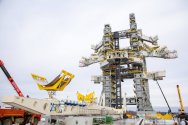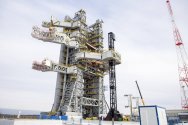If you listen to 'geniuses' like Peter Zeihan Russia's strategic missiles don't work. And the US just needs to invest more on missile defense to catch the few missiles that get through and reach the US.Bulava SLBM test is successful
Yet Russia has upgraded all their road mobile missiles to Yars-S and Yars. Each Yars ICBM can carry up to 10 warheads. They have at least 152 Yars launchers. Which means up to 1520 warheads. They also have six Borei SSBNs (3x Borei, 3x Borei-A), way more modern than anything the US has, with these Bulava SLBMs. Each submarine can carry 16 missiles with up to 10 warheads each. That is up to 160 warheads in a single submarine. Upto to 960 warheads on these submarines alone. They regularly test the Yars and Bulava to maintain the stockpile. And these tests are usually successful. Bulava had some teething issues initially but it has surpassed them a long time ago and is a reliable system at this point.
In the meantime, the US has a land based deterrent of Minuteman III ICBMs designed in the 1970s which failed its last test. They also only stopped using floppy drives to insert commands into the Minuteman III missiles a couple years ago. And the submarine based deterrent uses an obsolete platform i.e. the Ohio submarines. The Trident II itself had maintainability issues until some years ago:
As usual with the US a lot of what they say is projection.


